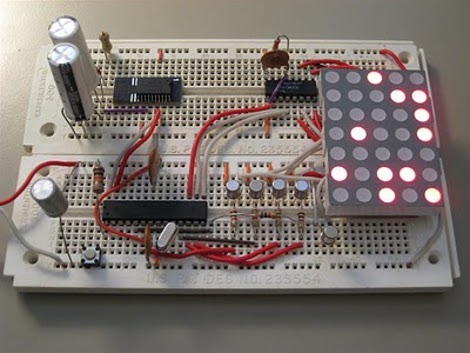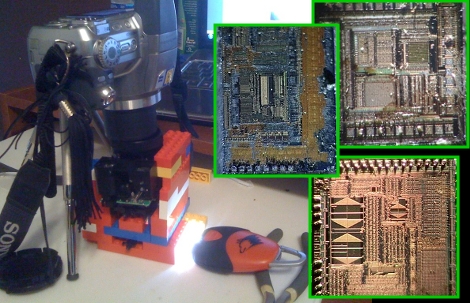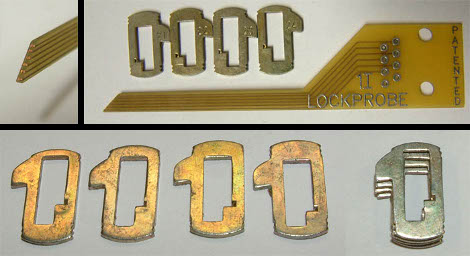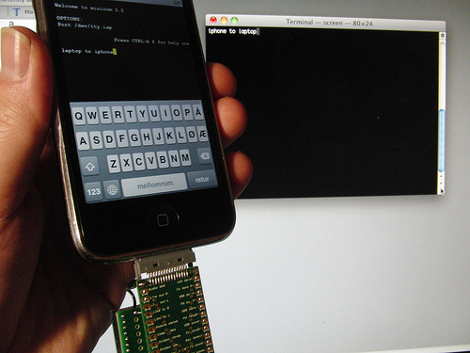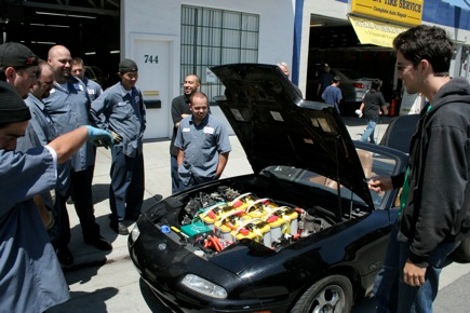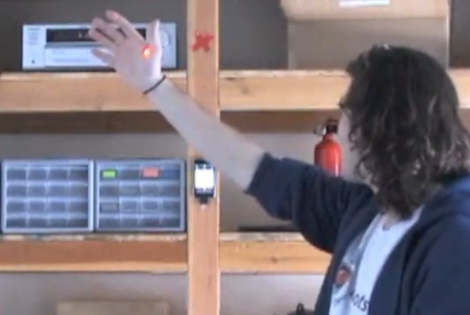
This track is awful, someone skip it! This project does just that with a wave of your hand. A laser beam shines across a room and, when obstructed, it sends a command to an iPod. One wave pauses playback, two waves skips to the next track, and a constant obstruction jumps backward one track.
They’re using a textile-compatible electronics platform called Schemer. This is the first time we’ve run across this product which uses a modular system to connect devices via a 1-wire communications bus.
No matter what hardware you use the concept is what interests us. There’s no shortage of iPod remote projects to draw on as examples. This method seems a bit more fun than banging your head for track changes or slapping wildly at an over-sized remote. We’re just a bit concerned about the power consumption of the laser-pointer, perhaps an IR beam would be a more economical choice?

